Every Martin Scorsese movie, ranked from worst to best
EW looks back on the director's entire catalog (including all of those music documentaries).
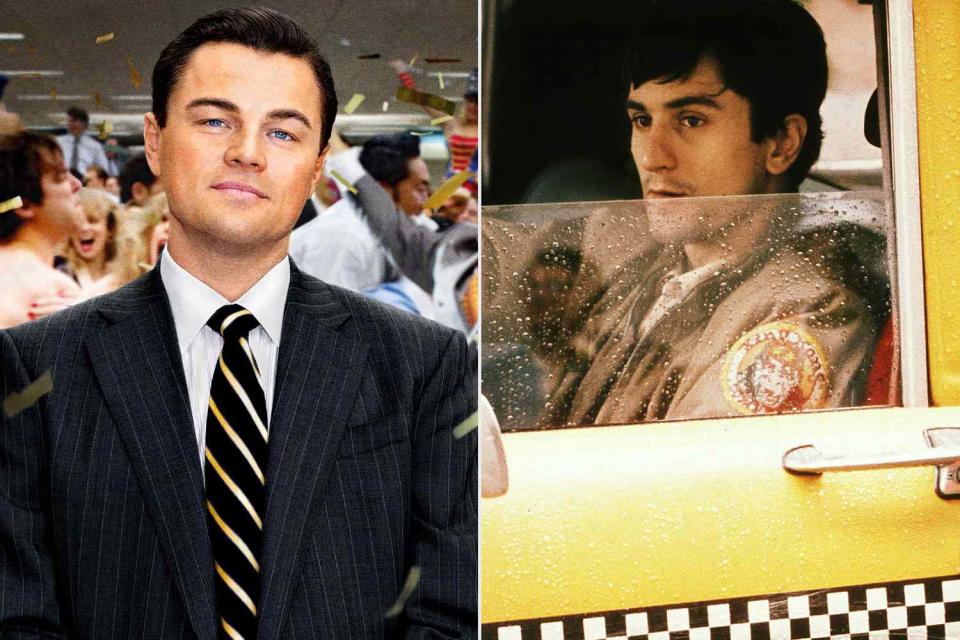
Appian Way/Paramount/Kobal/Shutterstock; Columbia/Kobal/Shutterstock
After receiving his 10th Oscar nod with 2023's Killers of the Flower Moon, Martin Scorsese officially became the most-nominated living filmmaker in the Best Director category. Over his unparalleled career, the filmmaker has helmed at least one masterpiece in every decade since the 1970s, many of which have influenced multiple generations of directors and cinephiles. Though he’s most often associated with exhilarating crime sagas like Goodfellas and The Departed (not to mention his depictions of violence), Scorsese has repeatedly proven to be adept at practically every genre, from religious epics and cerebral thrillers to black comedies and domestic dramas. Oh, and there's his prolific documentary work, which has chronicled prominent artists in music, film, and journalism. Without further ado, here’s EW’s ranking of every Martin Scorsese movie.
39. Boxcar Bertha (1972)
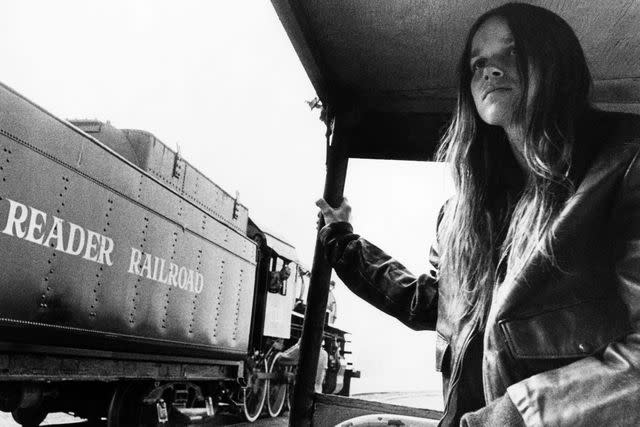
Everett Collection
Barbara Hershey in 'Boxcar Bertha'Scorsese’s second narrative feature is his only project that never quite clicks or has much to say. An exploitation film set during the Great Depression and produced by B-movie mogul Roger Corman, Boxcar Bertha tells the loose, meandering story of a southern bank robber (Barbara Hershey). Scorsese’s natural eye for visuals ensures that there’s a handful of inspired shots — and his creative collaboration with Hershey ultimately proved fruitful, as it led to The Last Temptation of Christ — but the overall project is the lone dud in the director’s filmography.
Where to watch Boxcar Bertha: Freevee on Amazon Prime
38. Shine a Light (2008)
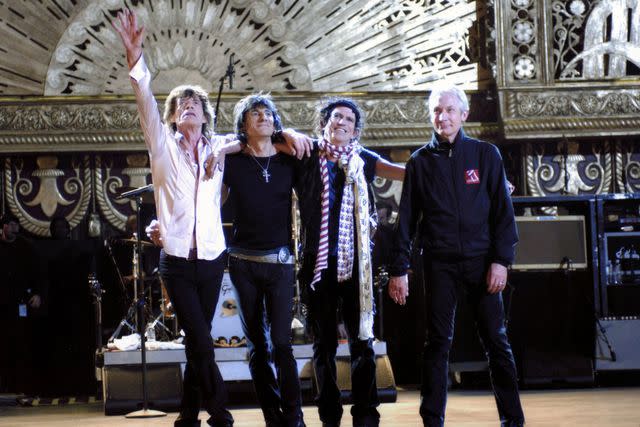
Paramount Classics/Courtesy Everett
Mick Jagger, Ron Wood, Keith Richards, and Charlie Watts in 'Shine a Light'Believe it or not, Scorsese has directed more music documentaries than gangster movies, and even the weakest among them has a decent amount of propulsive energy to it, thanks largely to the Rolling Stones’ undeniable on-stage charisma. The film is a pretty straightforward concert doc, capturing the Stones’ 2006 show at the Beacon Theater on their A Bigger Bang Tour, which features guest performances from Christina Aguilera, Jack White, and Buddy Guy. The most compelling moments are the bursts of archival footage where the younger Stones contemplate their longevity. It’s a solid piece of concert filmmaking, but not quite on the level of Marty’s other musical ventures.
Where to watch Shine a Light: Amazon Prime Video (to rent)
37. New York Stories (1989)
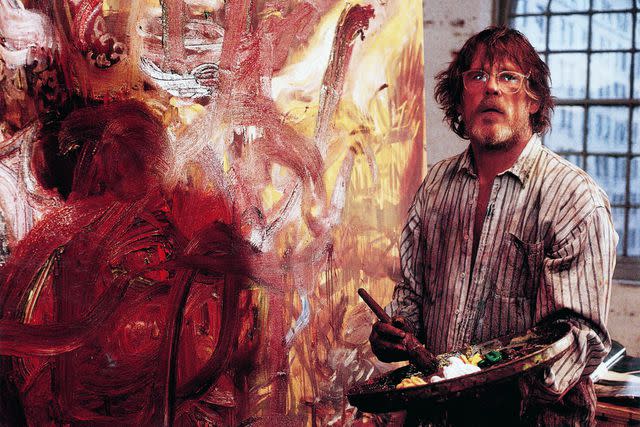
Buena Vista Pictures/Courtesy Everett
Nick Nolte in 'New York Stories'Martin Scorsese, Francis Ford Coppola, and Woody Allen each helmed a segment for this anthology film. Scorsese’s piece of the movie, Life Lessons, stars Nick Nolte as a troubled painter who channels his complex feelings toward his ex-girlfriend/assistant (Rosanna Arquette) — jealousy, anger, attraction — into his pieces. The short is quite strong and easily the best of the trio, as Coppola’s cutesy sequence in the middle is grating from its opening minutes, and Allen’s unsurprisingly neurotic finale never lives up to its full potential, so the overall viewing experience is disappointingly unbalanced.
Where to watch New York Stories: Amazon Prime Video (to rent)
36. Gangs of New York (2002)
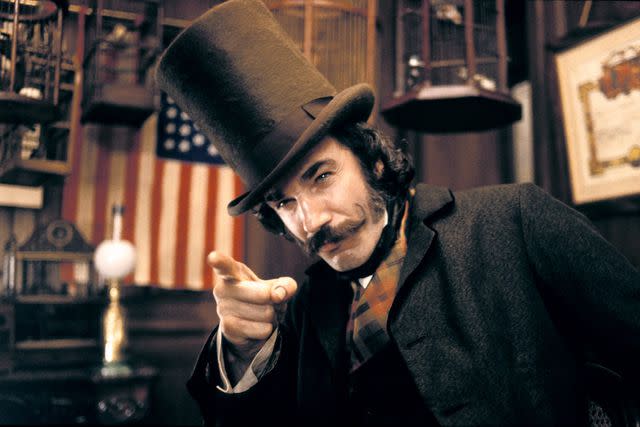
Scorsese’s first project with Leonardo DiCaprio came in this unwieldy historical crime epic, which chronicles the violent conflict between Catholic and Protestant factions in 1860s Manhattan. There’s a lot to love in Gangs of New York — sprawling period sets, exhilarating battle sequences, Daniel Day-Lewis’ turn as Bill the Butcher — but its pacing feels more uneven than in the director's other lengthy films. And it certainly doesn’t help that Scorsese fought over the final cut of the film with producer Harvey Weinstein, who insisted on a shorter, more commercial runtime. Scorsese’s fixation on worldbuilding and historical detail seems to create a detachment from the characters’ emotions and motivations; everyone feels much more thinly–sketched than the players in most of his other work.
Where to watch Gangs of New York: Max
35. Rolling Thunder Revue: A Bob Dylan Story (2019)
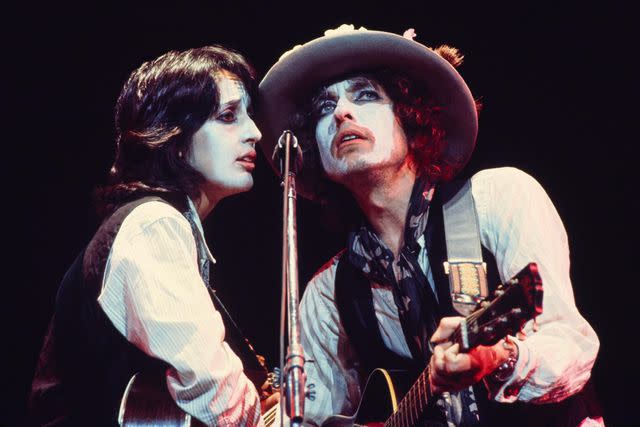
The filmmaker’s second Bob Dylan doc is a puzzling experiment that fuses fact with fiction. In its examination of the folk singer’s 1975 Rolling Thunder Revue tour, it employs interviews with actual Dylan collaborators and fictional characters played by actors who claim they were involved with the tour. Patti Smith, Joan Baez, Allen Ginsberg, Joni Mitchell, and Sharon Stone recount their experiences on the road in interview footage, though it remains unclear how much of their testimony can (or should) be believed due to the project’s unusual relationship with the truth. It’s an intriguing swing that spins an entertaining, multifaceted yarn about one of the great American musicians, but its ambiguity makes it difficult to fully parse.
Where to watch Rolling Thunder Revue: A Bob Dylan Story: Netflix
34. Kundun (1997)
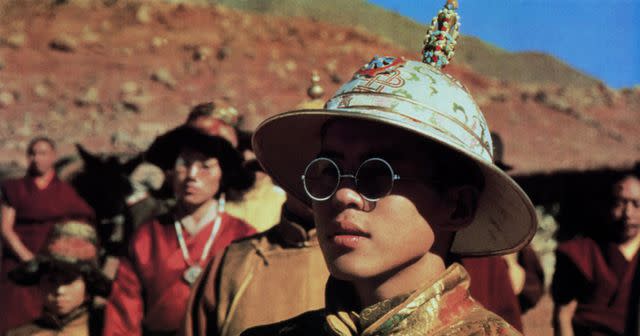
Buena Vista/Courtesy Everett
Tenzin Thuthob Tsarong in 'Kundun'Cinematographer Roger Deakins ensures that this Dalai Lama drama is one of Scorsese’s most visually stunning works to date, as every shot is rich with either a stunning landscape or vibrant textures, provoking grandeur and lived-in intimacy simultaneously. The flow of the narrative, however, is wildly inconsistent, which makes it tough to emotionally or intellectually invest in the proceedings. And the central figure’s supposed leaderly perfection doesn’t make for much internal conflict. That shouldn’t be an issue given the plethora of external pressure facing the characters, but it unfolds at such a leisurely pace that massive events feel somewhat inconsequential.
Where to watch Kundun: Not available to stream
33. The 50 Year Argument (2014)
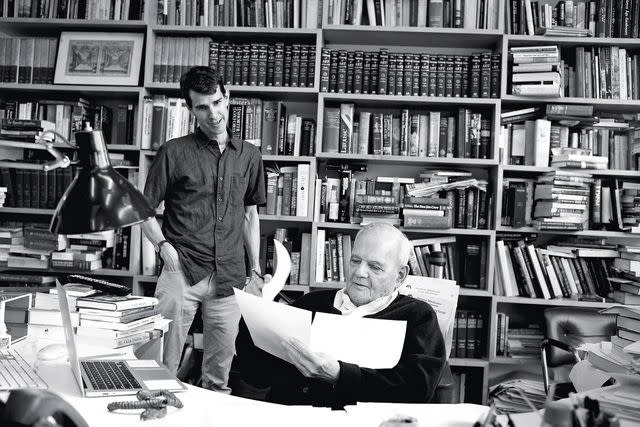
Brigitte Lacombe
Hugh Eakin and Robert Silvers in 'The 50 Year Argument'Scorsese’s documentary celebrating the New York Review of Books — co-directed with David Tedeschi, who edited many of his previous docs — never quite matches the people and ideas at hand with comparable style or probing insight, but it’s an effective film nonetheless. The 50 Year Argument is a revolving door of some of the country’s (and often the world’s) most thoughtful, articulate writers reminiscing about their triumphs, rarely dipping into much criticism or controversy beyond the work they’re proudest of to this day. It’s smart but surprisingly simple.
Where to watch The 50 Year Argument: Apple TV
32. Who’s That Knocking at My Door? (1967)
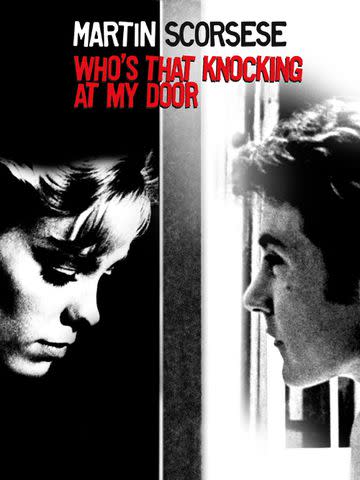
The filmmaker’s feature debut is a solid character study about a young man who loves movies and also totally sucks. It opens with a pitch-perfect introduction to the director’s style: a one-two punch of Scorsese’s mother cooking a beautiful meal and a sequence where a bunch of teenagers beat the crap out of another kid with pop music blaring around them. Every scene highlighting Harvey Keitel and Zina Bethune’s romance is satisfying, as they turn attention to the power and gender dynamics that permeate the most inane conversations. The stretches where Keitel’s character hangs out with his friends are more chaotic and unfocused, though Thelma Schoonmaker’s editing helps make that looseness seem intentional.
Where to watch Who’s That Knocking at My Door?: Amazon Prime Video (to rent)
31. My Voyage to Italy (1999)
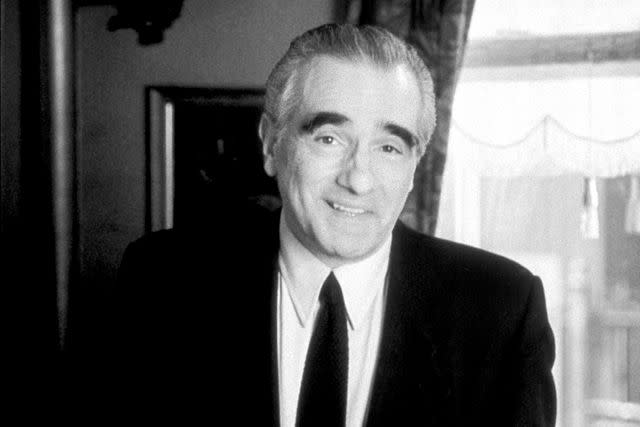
Miramax/Courtesy Everett
Martin Scorsese in 'My Voyage to Italy'The second of Scorsese’s two documentary tributes to film history, My Voyage to Italy is a little more personal than the director’s project on American cinema (see below): there’s archival footage of his family, which hails from Italy, alongside contemporary shots of Marty standing outside in the environments he’s talking about. It’s fascinating to see how the filmmaker saw Italian movies as an anthropological window into his cultural lineage, making you want to see all the films he talks about at length.
Where to watch My Voyage to Italy: BFI Player
30. A Personal Journey With Martin Scorsese Through American Movies (1995)
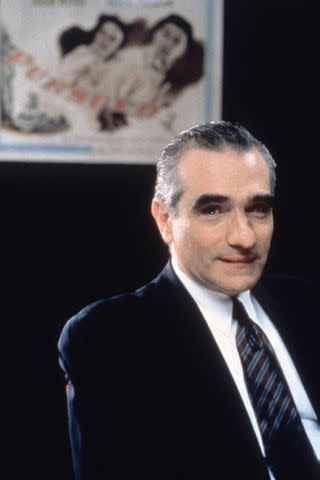
Buena Vista Pictures/Courtesy Everett
Martin Scorsese in 'A Personal Journey with Martin Scorsese Through American Movies'The first of Scorsese’s cinema documentaries is nearly four hours long, but the filmmaker’s enthusiasm ensures that the runtime flies by. He walks us through some of his favorite films in American history, citing the likes of D.W. Griffith, Vincente Minnelli, Elia Kazan, Stanley Kubrick, Anthony Mann, Busby Berkeley, and numerous others as personal heroes. It’s a shame Scorsese can’t be both a full-time filmmaker and a full-time film historian, as he’s exceptional in both roles and his passion is infectious. While the project isn’t a definitive educational tool, it aptly captures Scorsese’s influences that weren’t necessarily canonical works at the time of the doc’s creation.
Where to watch A Personal Journey With Martin Scorsese Through American Movies: Kanopy
29. American Boy: A Profile of Steven Prince (1978)
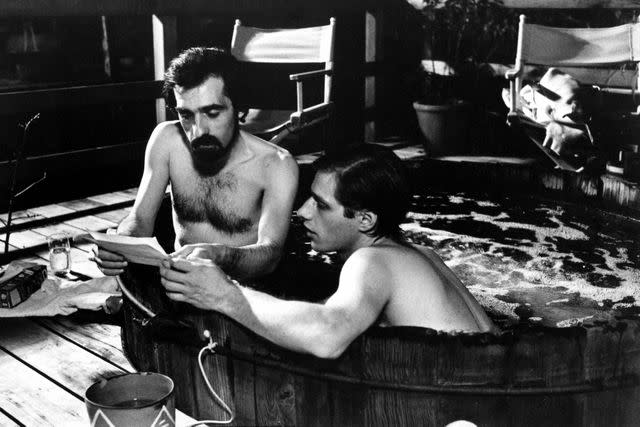
Ronald Grant/Mary Evans/Everett Collection
Martin Scorsese and Steven Prince in 'American Boy: A Profile of Steven Prince'This hour-long documentary sees Scorsese’s friend Steven Prince share a few of his wildest personal anecdotes, including his time working for Neil Diamond, his heroin addiction, and a handful of near-death experiences. It’s much shorter and to the point than most of the filmmaker’s other documentary works, but it still captures the spirit of its subject, giving him a platform to reflect, self-mythologize, and entertain. It also inadvertently has a lasting legacy thanks to Quentin Tarantino, who used one of Prince’s anecdotes as an inspiration for Uma Thurman’s overdose scene in Pulp Fiction.
Where to watch American Boy: A Profile of Steven Prince: Max
28. New York, New York (1977)

Everett Collection
Liza Minnelli in 'New York, New York'Scorsese’s only full-fledged movie musical harkens back to the old-school song-and-dance pictures from Hollywood’s Golden Age, for better or worse. The film, which follows a toxic romance between a singer (Liza Minnelli) and a saxophonist (Robert De Niro), is visually arresting with shimmering sets and complex camera arrangements, but scene after scene of domestic strife quickly becomes repetitive. Like the Busby Berkeley movies of the ‘30s, though, it features magnificent musical numbers in rapid succession that serve as an emotional release and climax for the complex people at the center of the film. (Bonus points for spawning the timeless song of the same name, now associated with Frank Sinatra’s recording.)
Where to watch New York, New York: Amazon Prime Video (with a premium subscription)
27. Public Speaking (2010)
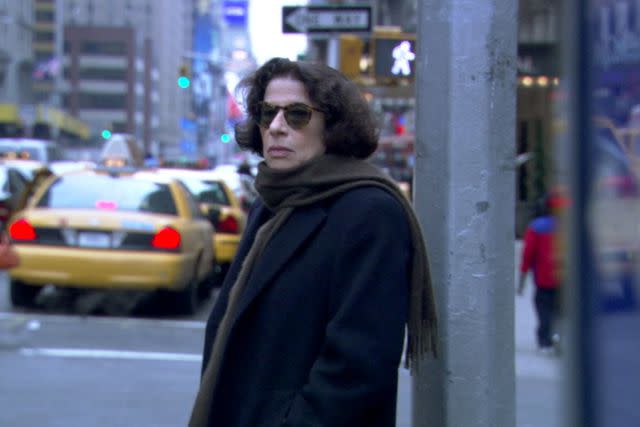
Rialto Pictures/Courtesy Everett
Fran Lebowitz in 'Public Speaking'This HBO doc spotlights writer Fran Lebowitz, whose terse musings on art, politics, New York, and life itself make her an endlessly compelling screen presence. Even when she’s saying something you might hate or talking about a subject you know nothing about, Lebowitz speaks with such consistent wit and conviction that it’s tough not to be sucked into her orbit. The project is one of Scorsese’s better-constructed documentaries, one that's brilliantly edited so all the archival footage flows naturally out of contemporary conversations, and it maintains a rapid pace.
Where to watch Public Speaking: Not available to stream
26. Shutter Island (2010)
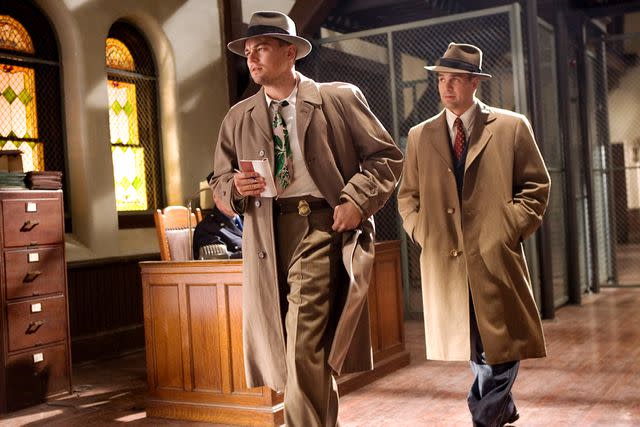
Andrew Cooper/Paramount/Courtesy Everett
Leonardo DiCaprio and Mark Ruffalo as duly appointed federal marshals in 'Shutter Island'This psychological thriller sees Leonardo DiCaprio and Mark Ruffalo play duly appointed federal marshals who investigate the disappearance of an inmate at a remote hospital for the criminally insane. Since Shutter Island hinges so strongly on surprises and twists, the first unspoiled viewing is a radically different (and far superior) experience than any subsequent rewatches; once you have the full picture of what’s going on, each development loses substantial impact. But the movie’s pockets of colorful hallucinatory surrealism are quite stunning in their construction, even if the mystery and character work are lackluster in retrospect.
Where to watch Shutter Island: Paramount+
25. Street Scenes 1970 (1970)

Scorsese oversaw the post-production of this student protest documentary which was somewhat improvised by its camera operators. The project is a resounding success because it includes testimonies from wildly different people with disparate positions on the street, documenting the aggressive anti-protest sentiment almost as frequently as it presents the Vietnam War protestors, showing how American discourse repeatedly gets bogged down by reductive nationalist talking points, rhetorical disagreements, and class divisions. The doc intentionally acknowledges the confused, conflicting positions within antiwar movements, making it impressively nuanced, especially for a project made by justifiably angry students.
Where to watch Street Scenes 1970: YouTube
24. No Direction Home (2005)
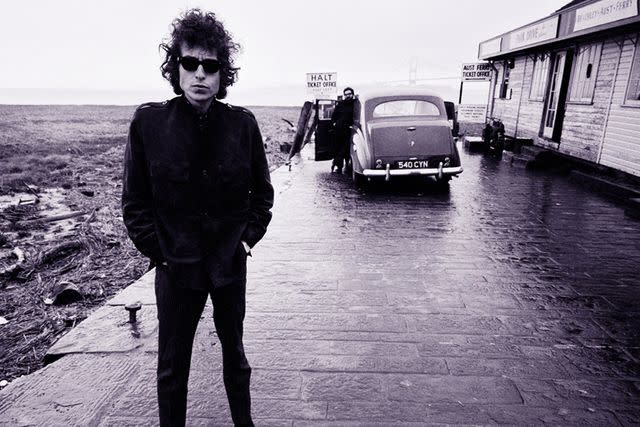
Apple TV+
Bob Dylan in 'No Direction Home'This two-part documentary chronicles Bob Dylan’s rise to fame. The first chapter offers a fairly standard introduction to the legendary folk singer’s early life and career, while the second presents a complex portrait of its subject at one of the most pivotal junctures of his artistic journey. Much of the film utilizes talking head interviews and still photographs, though the final hour mainly consists of immersive color footage covering events immediately preceding, during, and following Dylan “going electric.” No Direction Home presents a fascinating account of Dylan’s disillusionment with his unique place in the American cultural landscape without reducing his work to clear-cut political positions or over-explaining his mystery.
Where to watch No Direction Home: Apple TV+ (to rent)
23. The Last Waltz (1978)

Everett Collection
Richard Manuel, Robbie Robertson, Rick Danko, Levon Helm, and Garth Hudson of The Band in 'The Last Waltz'Widely considered one of the greatest concert movies ever made, The Last Waltz captures the Band’s 1976 farewell show at the Winterland Ballroom in San Francisco. Rarely has such electrifying energy from a live performance translated so vividly onto film. Even if you don’t know anything about the Band, there are so many hall-of-fame special guests that anyone who’s ever turned on a radio will find someone familiar by the end. Highlights include Joni Mitchell, Van Morrison, Muddy Waters, and Bob Dylan.
Where to watch The Last Waltz: Tubi
22. The Color of Money (1986)
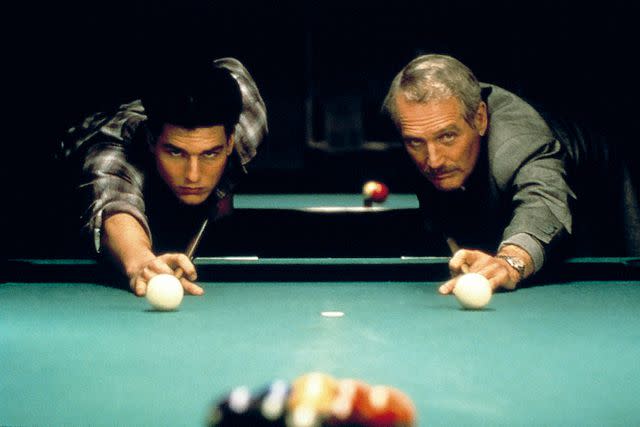
Everett Collection
Tom Cruise and Paul Newman in 'The Color of Money'One of Scorsese’s earliest director-for-hire jobs came with this legacy sequel to the pool classic The Hustler. Paul Newman won a long-overdue Oscar for reprising "Fast Eddie" Felson, his role from the 1961 original, who here mentors a young hotshot played by Tom Cruise. It’s perhaps the best example of Scorsese’s ability to channel his marvelous creative instincts into populist commercial success, pushing popular conventions without totally abandoning them. The filmmaker finds every conceivable way to frame the table and its players, and his compositions still feel fresh by the two-hour mark because he never repeats a trick twice, and all of them are masterfully executed.
Where to watch The Color of Money: Amazon Prime Video
21. The Aviator (2004)
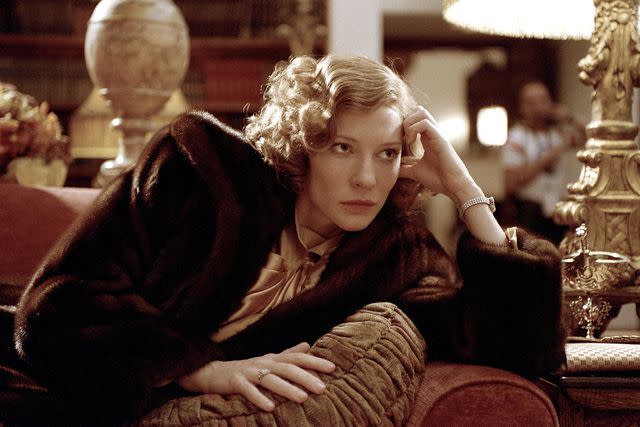
Miramax/Courtesy Everett
Cate Blanchett in 'The Aviator'This portrait of eccentric tycoon Howard Hughes (Leonardo DiCaprio) bears a certain resemblance to Citizen Kane, though it maintains more sympathy for its larger-than-life subject than Orson Welles’ classic, and peaks with its sporadic bursts of horror-tinged, nightmarish surrealism. The director and his team provide The Aviator with top-tier period visuals — it seems like he’d been waiting his whole life to finally make a movie that almost exclusively takes place in pristine projection rooms and glimmering nightclubs. At times, it’s also his most indulgent work, fixating on the minutia of Golden Hollywood details and dynamics. Cate Blanchett also notably won her first Oscar here for playing Katharine Hepburn.
Where to watch The Aviator: Paramount+
20. George Harrison: Living in the Material World (2011)
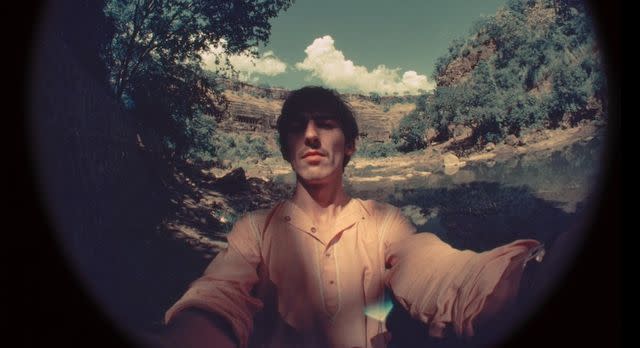
MAX
George Harrison in 'George Harrison: Living in the Material World'Though he’s helmed a multitude of music docs, Scorsese’s two-part film on George Harrison is the only work with a deceased subject. As a result, the interviews have a more contemplative, reverent, and wistful tone than those in the filmmaker’s other musical projects. Titanic figures like Paul McCartney, Ringo Starr, Tom Petty, Eric Clapton, and Eric Idle all supply valuable, multifaceted reflections on their late friend, but perhaps the most insightful perspective is Harrison’s own, provided via letters he sent to his family and loved ones during pivotal moments of his life. Scorsese takes care to thoughtfully highlight the "quiet Beatle’s" spiritual journey.
Where to watch George Harrison: Living in the Material World: Max.
19. Cape Fear (1991)
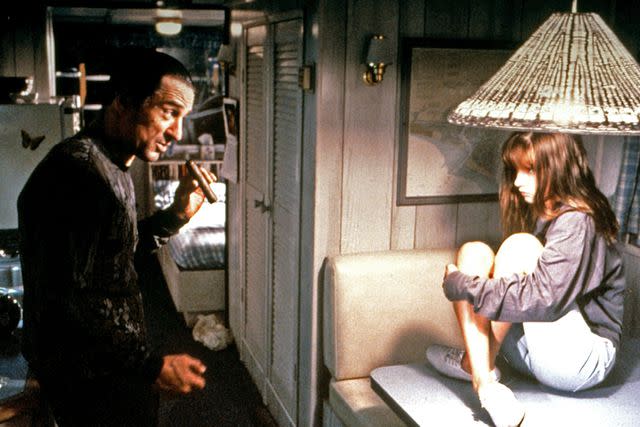
MCA/Courtesy Everett
Robert De Niro and Juliette Lewis in 'Cape Fear'Nick Nolte plays a lawyer whose family is terrorized by one of his former clients (Robert De Niro) in this remake of the 1962 thriller of the same name. Scorsese emulates Alfred Hitchcock with impeccable style: the camera constantly glides, whips, and zooms from unusual angles to inflict maximum unease. It’s a gripping marathon of psychological torment, first drawing you into the comforts of its character’s glossy, oversaturated wealth and then stripping it away, piece by piece, with over-the-top theatrics that destroy all notions of security. Every performance in Cape Fear is fantastic, but Juliette Lewis rises above the rest as the protagonist’s conflicted teenage daughter.
Where to watch Cape Fear: Amazon Prime Video (to rent)
18. Alice Doesn’t Live Here Anymore (1974)

Warner Brothers/Courtesy of Getty Images
Ellen Burstyn in 'Alice Doesn't Live Here Anymore'An intimate tragedy about the struggles and tiny triumphs of working-class American women, Alice Doesn’t Live Here Anymore is grounded by one of the strongest performances in any Scorsese project. Ellen Burstyn’s Alice is nuanced and messy, deftly moving between melancholy, fury, and lighthearted playfulness. She stumbles around words and laughs at her own jokes with unwavering naturalism. Scorsese balances smooth long takes with chaotic handheld ones, allowing the actors to breathe and the character to feel lived-in. The film also features an excellent turn from Kris Kristofferson as Alice’s final love interest, in addition to early performances from Jodie Foster and Laura Dern.
Where to watch Alice Doesn’t Live Here Anymore: Netflix
17. Hugo (2011)
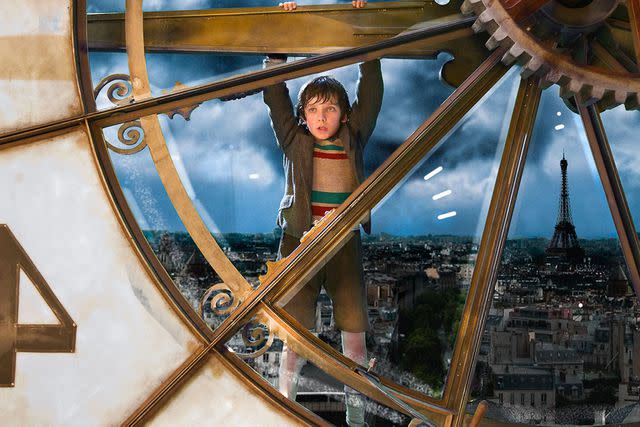
Jaap Buitendijk/Paramount Pictures/Courtesy Everett
Asa Butterfield in 'Hugo'Scorsese choosing to adapt Brian Selznick’s kid-friendly book about a boy who lives in a Parisian train station as a family-forward 3-D holiday movie may seem like the most surprising career move he’s made. It makes much more sense, though, as Hugo reveals itself to be a romantic, emotional tribute to the dawn of cinema at the beginning of the 20th century, as shepherded by Georges Méliès. It’s a wonderful movie about movies because it’s so invested in the idea of films as dreams that bring people together, and it wistfully lionizes the artists who launched the tradition 100 years ago.
Where to watch Hugo: Amazon Prime Video (to rent)
16. Killers of the Flower Moon (2023)

Apple TV+
Lily Gladstone in 'Killers of the Flower Moon'Scorsese’s latest project examines the fraught, complex marriage between bumbling oaf Ernest Burkhart (Leonardo DiCaprio) and his suspicious wife Mollie (Lily Gladstone), a member of the Osage nation in Oklahoma who holds valuable oil rights. Along with murderous mogul William King Hale (Robert De Niro), the central characters’ thorny relationships speak to the harrowing dynamics at the heart of the American project: stupid, amoral men are persuaded by friendly, conniving monsters to commit genocide to maximize profits, all while the pleas of the victims are intentionally ignored. Gladstone is phenomenal at subtly conveying a constant sense of dread that becomes so persistent that she, and we, become numb to it. It’s a steady, brutal death knell devoid of glamour and joy.
Where to watch Killers of the Flower Moon: Apple TV+
15. The Irishman (2019)
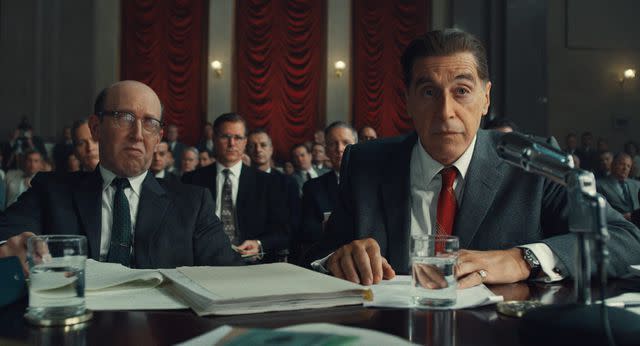
This supersized crime epic reunites Scorsese with many of his most frequent collaborators — including Robert De Niro, Harvey Keitel, and Joe Pesci — to tell the story of Jimmy Hoffa and his friend/enforcer Frank Sheeran. Like Goodfellas and Casino, The Irishman follows a rise-and-fall structure that shows how empty a life of crime leaves its perpetrators. But what’s lost during the fall isn’t wealth or power: it’s decades of tender, genuine friendship. Meanwhile, each actor's performance as a soft, contemplative elder statesman has a soulful, grandfatherly quality that complicates the damage that their characters do.
Where to watch The Irishman: Netflix
14. Mean Streets (1973)
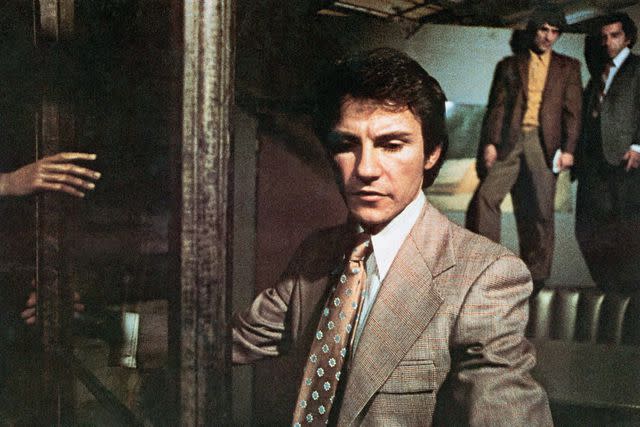
Everett Collection
Harvey Keitel in 'Mean Streets'Scorsese’s breakthrough film sees an eclectic group of young men maneuvering through the low-level criminal underbelly of Manhattan’s Little Italy. In many ways, Mean Streets functions as a prophecy for all the thematic fixations and stylistic flair of the filmmaker’s future work. It tells a somewhat rambling story that concerns pent-up rage, the woes of masculinity, Catholic guilt, and male friendship, while presenting itself with smooth long takes in lively nightclubs, a borderline-goofy pop soundtrack, and bursts of harrowing violence.
Where to watch Mean Streets: Tubi
13. Raging Bull (1980)
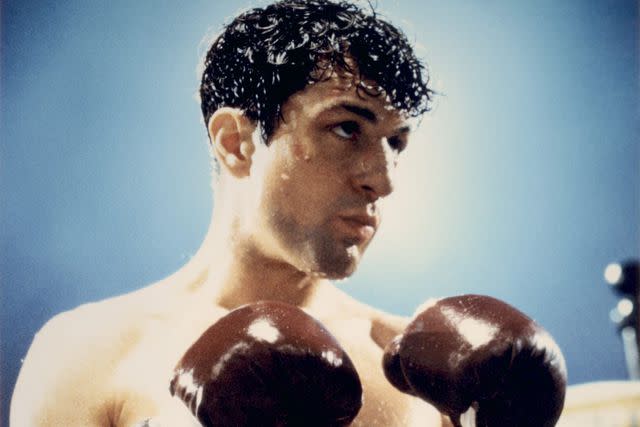
This boxing drama chronicles the life and career of volatile middleweight fighter Jake LaMotta. Robert De Niro won his second Academy Award for playing the central boxer as a human embodiment of stubbornness and the worst aspects of masculinity, spending the majority of the movie mistreating and abusing the people around him. LaMotta’s gruffness and cruelty make him nearly impossible to empathize with, though his comeuppance and unexpected self-awareness toward the end are immensely satisfying when they finally arrive. Joe Pesci and Cathy Moriarty turn in stellar supporting work, further enhancing the film’s sense of gritty naturalism.
Where to watch Raging Bull: Tubi
12. Casino (1995)
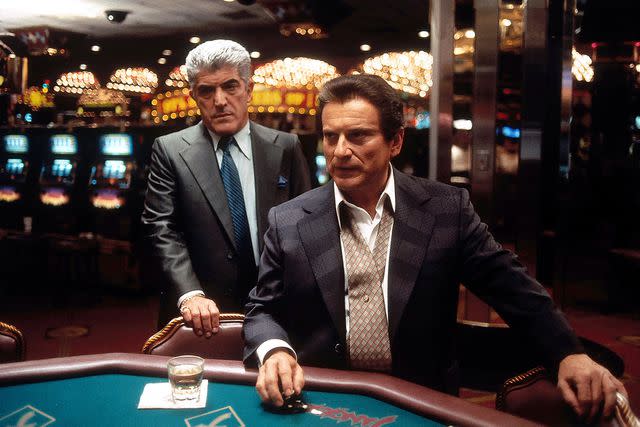
Universal/Courtesy Everett
Frank Vincent and Joe Pesci in 'Casino'Scorsese’s sprawling crime epic charts the mob takeover of Las Vegas in the mid-20th century. It’s among the filmmaker’s most visually stunning work: the colors and lights of a bygone era are alluringly bright, graduating into impossible slickness and sheen with the corporate artifice of the film’s conclusion. Meanwhile, Thelma Schoonmaker’s rapid-fire editing has never been stronger, keeping every sequence lively to disguise the three-hour runtime. The character drama is also practically Shakespearean, as the three expertly-performed lead narcissists (Robert De Niro, Joe Pesci, and Sharon Stone) repeatedly double-cross each other and ruin their world in pursuit of total domination.
Where to watch Casino: Starz
11. Bringing Out the Dead (1999)

This ambulance driver drama is one of the filmmaker’s most wildly stylized projects. Scorsese creates a dismal nighttime hellscape drenched in neon, employing dizzying camera movements and unusual angles that make it seem like a carnival ride from hell. It has bursts of mania straight out of a slapstick comedy and surreal dream sequences reminiscent of a non-narrative art film. Though it might be his darkest project thematically, it’s one of his most expressively colorful, with gorgeous oversaturated lighting and distinct tints that enhance the emotions and sense of place.
Where to watch Bringing Out the Dead: Amazon Prime Video (to rent)
10. The Age of Innocence (1993)
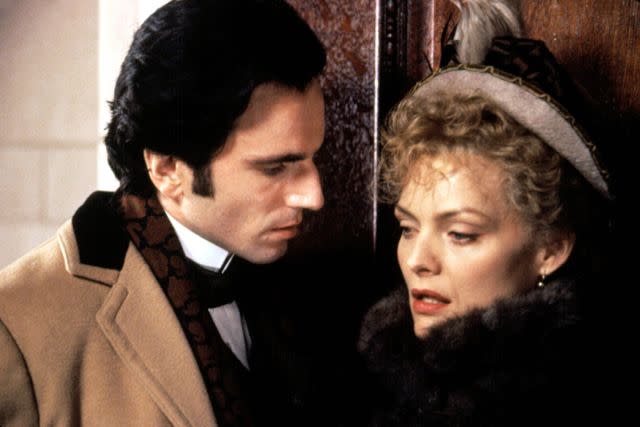
Though it couldn’t be more tonally distinct from the director’s other films, this elegant costume drama makes for a fitting companion piece to Goodfellas. Both projects draw us into the foreign world of not-so-long-ago New York that might as well be a different planet, exploring the customs, manners, and unspoken norms that dictate people’s entire lives once they lose the ability to conceive of life outside their bubble. Daniel Day-Lewis stars as an upper-class lawyer caught between his fiancée (Winona Ryder) and a controversial countess (Michelle Pfeiffer). All of the performances are wonderful, but Pfeiffer is particularly phenomenal. She’s beautifully understated, adding an overwhelming sense of romantic yearning with even the smallest glances and gestures.
Where to watch The Age of Innocence: The Roku Channel
9. Italianamerican (1974)
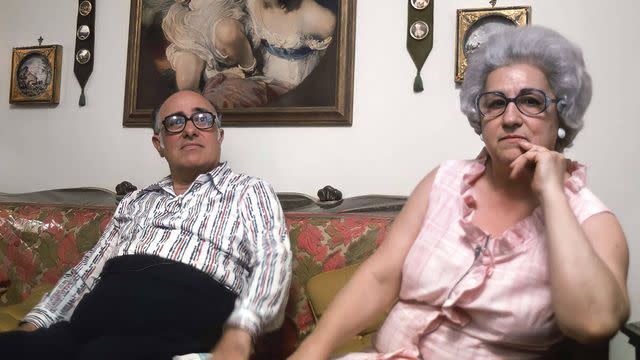
Prime Video
Charles Scorsese and Catherine Scorsese in 'Italianamerican'Scorsese’s best documentary is also one of his shortest and sweetest. Italianamerican is a gorgeous little slice-of-life that sees the filmmaker’s parents, Catherine and Charles, recount their lives in New York as children of Italian immigrants. It paints a beautiful portrait of midcentury urban living, and it’s a joy to see the director’s loving rapport with his mother and father, who also play small roles in numerous other Scorsese pictures (plus Moonstruck and The Muppets Take Manhattan).
Where to watch Italianamerican: Max
8. Silence (2016)
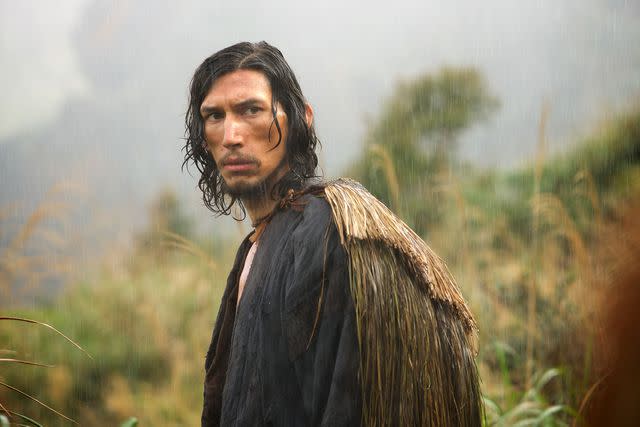
Scorsese brilliantly balances a meditative style with constant underlying dread and anxiety in this adaptation of Shūsaku Endō’s seminal novel. The film follows two Jesuit missionaries (Andrew Garfield and Adam Driver) who embark on a journey to find their mentor (Liam Neeson) after he goes missing in feudal Japan. Silence is concerned with irreconcilable tensions — the personal and the communal, faith and doubt, loyalty and betrayal — and how torturous it feels to be caught in the middle of them all. There are few clear questions and even fewer answers, as everything exists in shades of grey. It’s also one of the director's most visually stunning works, capturing the hostility and wonder of natural landscapes and humanity’s small place within them.
Where to watch Silence: Amazon Prime Video (to rent)
7. The Departed (2006)
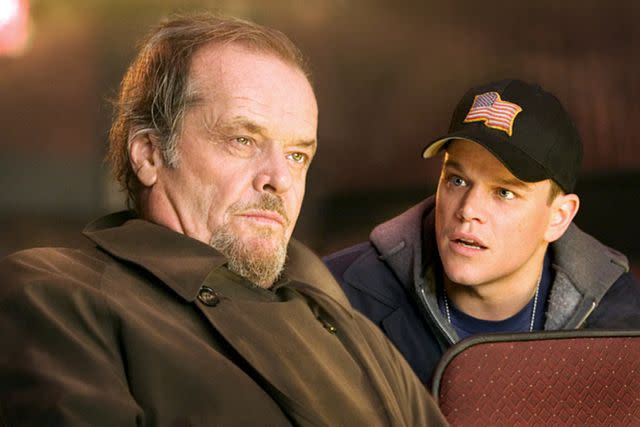
Warner Bros./Courtesy Everett
Jack Nicholson and Matt Damon in 'The Departed'Scorsese’s sole Best Picture win came via this exhilarating game of cat and mouse, which sees an undercover detective (Leonardo DiCaprio) and a dirty cop (Matt Damon) navigate Boston’s seedy criminal underworld. It’s somewhat funny that Scorsese’s biggest Oscar victory is attached to this project, which is among his most conventionally entertaining, crowd-pleasing work — it’s as close to a conventional blockbuster as the director has ever come. Still, it contains a ridiculous amount of unforgettable performances and some of the most thrilling sequences in Scorsese’s filmography.
Where to watch The Departed: Amazon Prime Video (to rent)
6. Taxi Driver (1976)
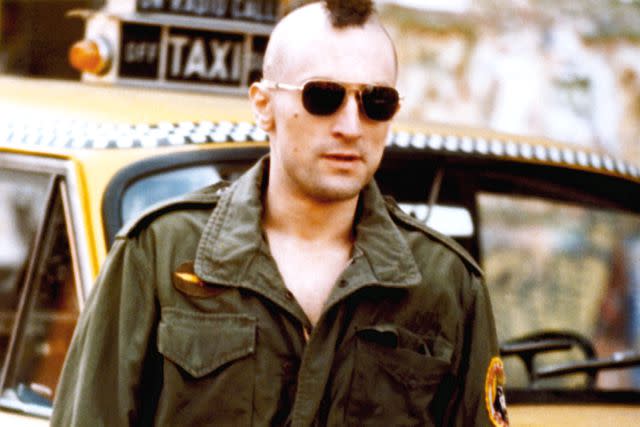
The peak of Scorsese’s ‘70s run came with this rousing drama that gave Western cinema its definitive anti-hero in Travis Bickle (Robert De Niro). The filmmaker joined forces with screenwriter Paul Schrader (who would later become an acclaimed director in his own right), celebrated cinematographer Michael Chapman, and legendary composer Bernard Herrmann to craft a stylishly terrifying portrait of sociopathic American rage. Taxi Driver overflows with grimy, nightmarish urban detail, and offers an understanding of some of the worst people in the world — radicalized by a strange combination of narcissism and powerlessness — but never quite empathizes with them.
Where to watch Taxi Driver: The Roku Channel
5. Goodfellas (1990)
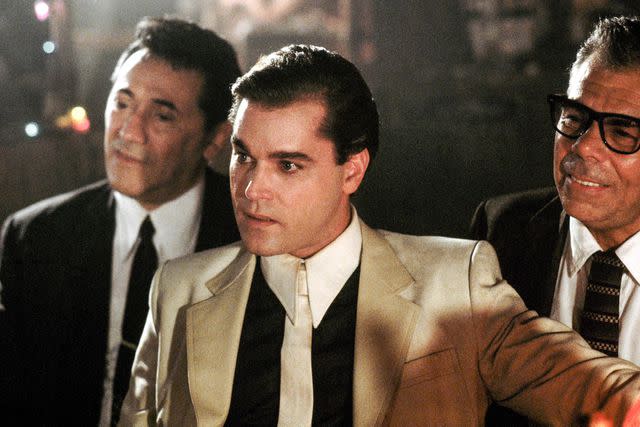
Scorsese’s career-defining crime saga explores the nasty, volatile, and often mundane lifestyles of New York gangsters through the eyes of Henry Hill (Ray Liotta). It’s a wonderful nugget of cinematic nostalgia, seeing Scorsese reflect on the types of perps he grew up around and paint them as both charming, loyal buddies and selfish monsters. Goodfellas displays the shiny appeal and the quiet normality of the mobster world while also exposing why it's not worth the glamour — but many of the characters tragically can't live any other way. Full of breathtaking visual compositions and propulsive editing, the film's soundtrack is also peppered with some of the most effective pop needle drops in film history.
Where to watch Goodfellas: Hulu
4. The Last Temptation of Christ (1988)
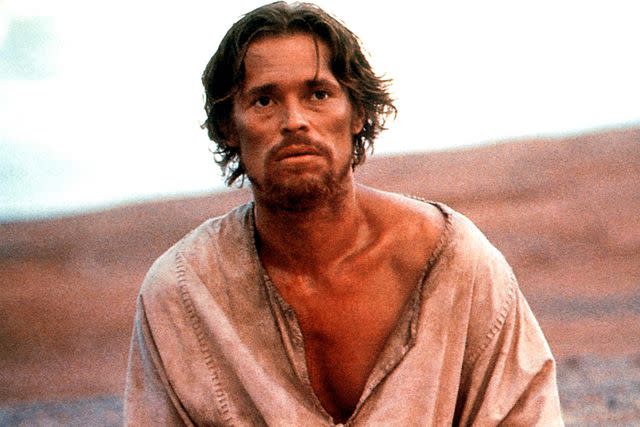
Universal/Courtesy Everett
Willem Dafoe in 'The Last Temptation of Christ'Perhaps the filmmaker’s most controversial project, The Last Temptation of Christ imagines Jesus’ final days leading up to the crucifixion. Scorsese is unafraid to take bold artistic liberties with the legendary figure at the heart of the film, rendering the messiah (Willem Dafoe) as a conflicted leader defined by paradoxical tensions —namely, the mystery of being both human and God, as well as the disparity between his confident message and personal doubt. The film also colors complex, tense relationships with Judas (Harvey Keitel) and Mary Magdalene (Barbara Hershey) that effectively dramatize and emphasize Christ’s humanity.
Where to watch The Last Temptation of Christ: Peacock
3. The King of Comedy (1982)
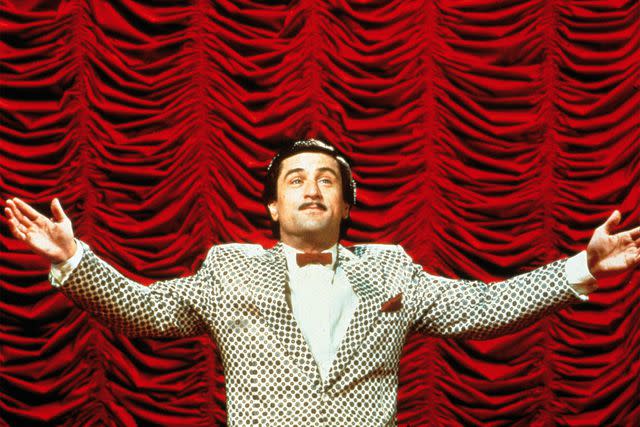
Robert De Niro delivers one of his scariest performances as failed stand-up comedian Rupert Pupkin in this distressing drama. Pupkin’s persistent pseudo-politeness and ability to spin any setback into a phony advantage makes him one of the all-time great movie villains, and De Niro plays him as if he’s rehearsed every line to himself before he speaks. Everything about the film is simultaneously funny and terrifying — particularly Sandra Bernhard as Rupert’s unhinged sidekick — and its interrogation of celebrity culture and fame will never fail to resonate.
Where to watch The King of Comedy: Hulu
2. After Hours (1985)
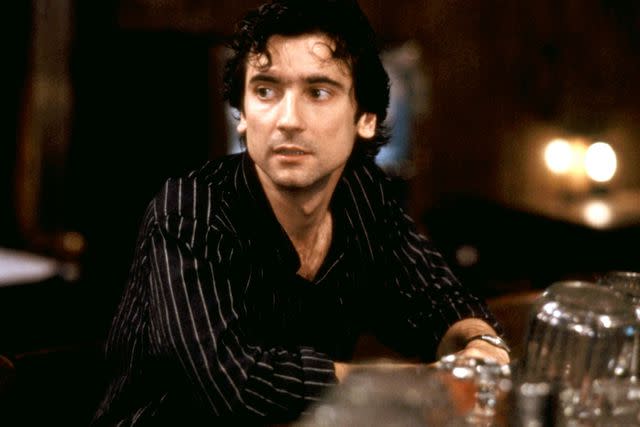
Warner Bros./Courtesy Everett
Griffin Dunne in 'After Hours'Nearly all of Martin Scorsese’s movies concern the moral and spiritual battles between good and evil within every person. Sometimes his protagonists reach redemption, sometimes they descend into hell. This comedy of errors is one of his most involved ethical dilemmas because it’s so ordinary and universal; you can project onto Griffin Dunne’s everyman character much more easily than those played by De Niro or Keitel. He follows his instincts to all the wrong places but continually tries to justify his actions — and many of his missteps are almost mandated by cosmic, karmic forces. It’s all about the fundamental struggle of being alive — the tension between survival, pleasure, and a reluctant compulsion to do the right thing.
Where to watch After Hours: Tubi
1. The Wolf of Wall Street (2013)
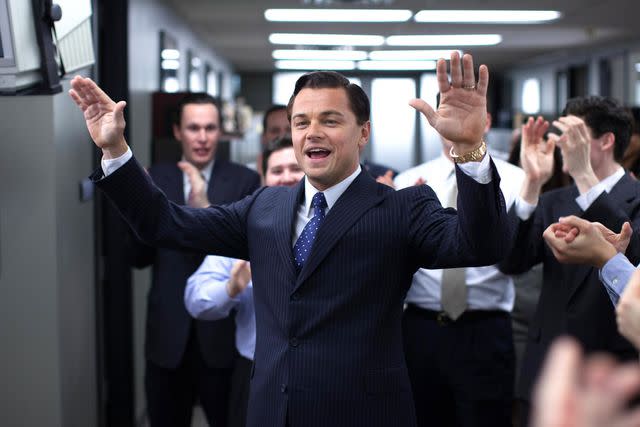
Any of the preceding 10-15 titles could easily have taken this top spot, but has Scorsese — or anyone, for that matter — ever made a movie this massive and this seismically entertaining? The story of slick white-collar criminal Jordan Belfort summons a never better performance from Leonardo DiCaprio by playing to all of his strengths, framing the actor as a warped, subhuman embodiment of the American dream: pretty, exorbitant, and magnetic on the surface, but greasy, amoral, shallow, and hollow below his paper-thin skin. He devolves from an awkward young dreamer into a cartoon sleazebag millionaire, remaining ridiculously funny at every possible juncture thanks to his otherwise-underutilized physical comedy skills.
The Wolf of Wall Street is also the fastest three-hour movie ever made — editor Thelma Schoonmaker definitively outdoes herself here, making a story that spans a decade feel breezy but never rushed thanks to terse montages. Scorsese makes every scene look and sound like a tasteless asshole’s vision of paradise, with tacky locations and stupid needle drops. It’s career-best work for nearly everyone involved.
Where to watch The Wolf of Wall Street: Paramount+
Want more movie news? Sign up for Entertainment Weekly's free newsletter to get the latest trailers, celebrity interviews, film reviews, and more.
Related content:
Martin Scorsese surpasses Steven Spielberg as the living director with most Oscar noms
Killers of the Flower Moon is a brilliant synthesis of Martin Scorsese's filmography
Read the original article on Entertainment Weekly.
